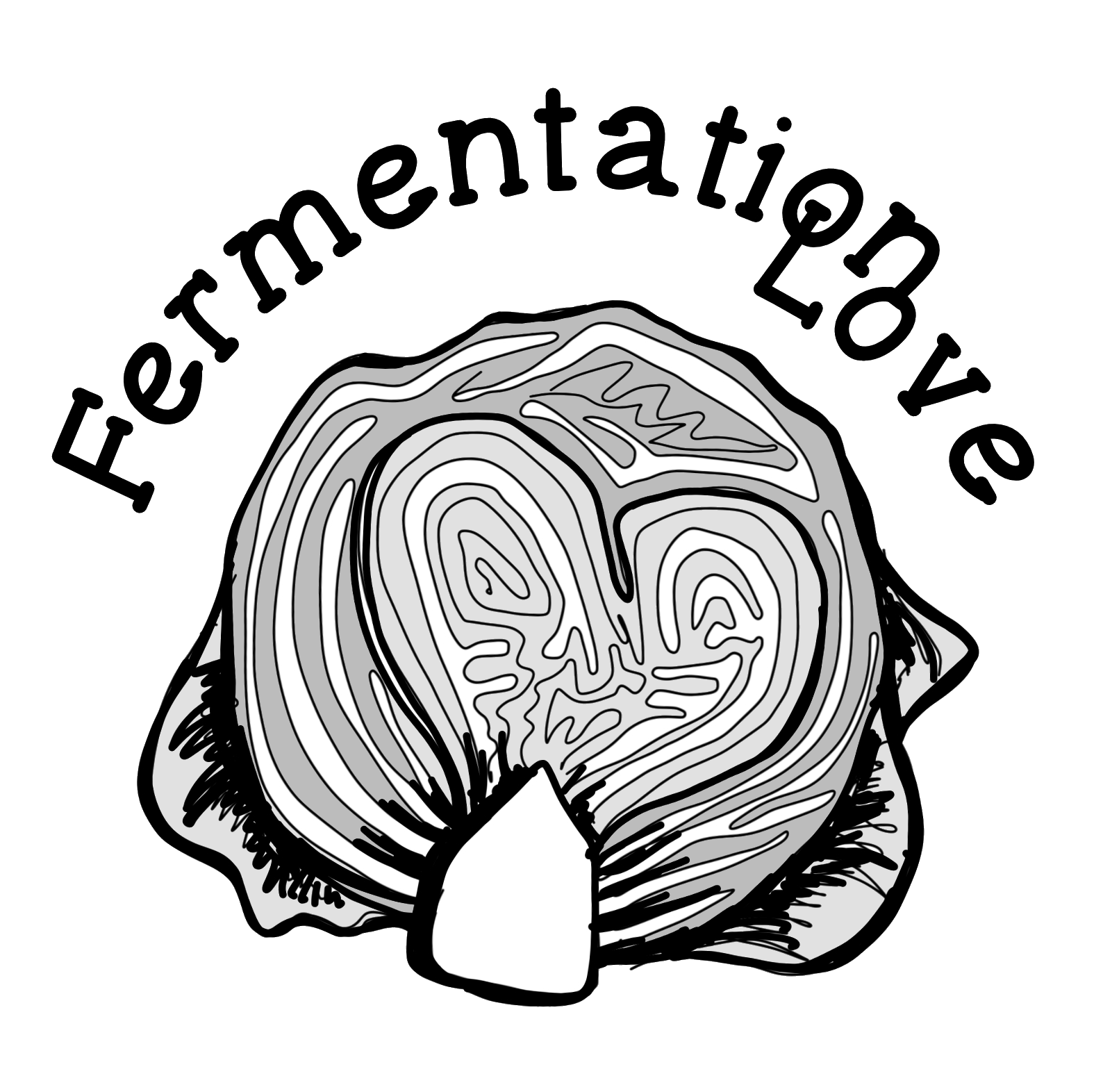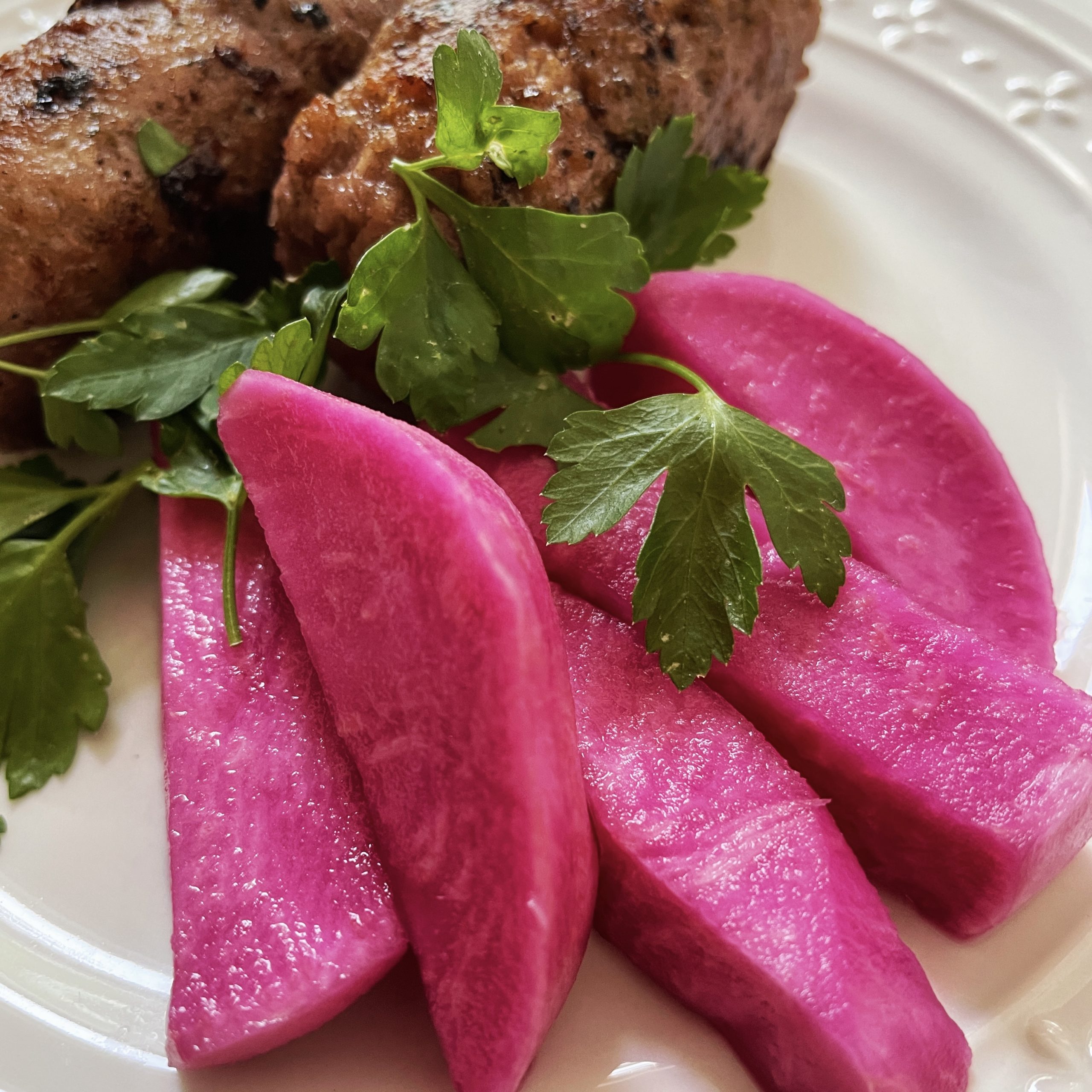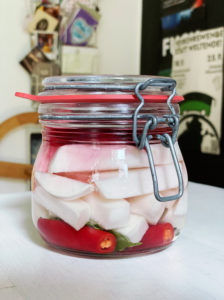Fermented pink beets are baby white beets cut into sticks that turn pink during the fermentation process because of the added beetroot. Pretty and delicious, that's how I like my ferments.
Jump to recipeFor fermented pink turnips, the choice of vegetables is even more important than for other ferments. They must be absolutely fresh and crunchy, otherwise the result will be only moderately edible. The finest of the turnips are the white, round Teltow turnips and the May turnips, both of which taste truly exquisite. I like them steamed, glazed with miso and, of course, also love them fermented.
Seasonal is better
Turnips are on sale from May to June, and Teltow turnips are even available twice a year, in spring and fall. However, only if you live near Teltow. Autumn turnips with their beautiful gradient to purple are, as the name suggests, available in autumn. They also taste very good, but are not quite as perfect for fermented pink turnips as the other two varieties.
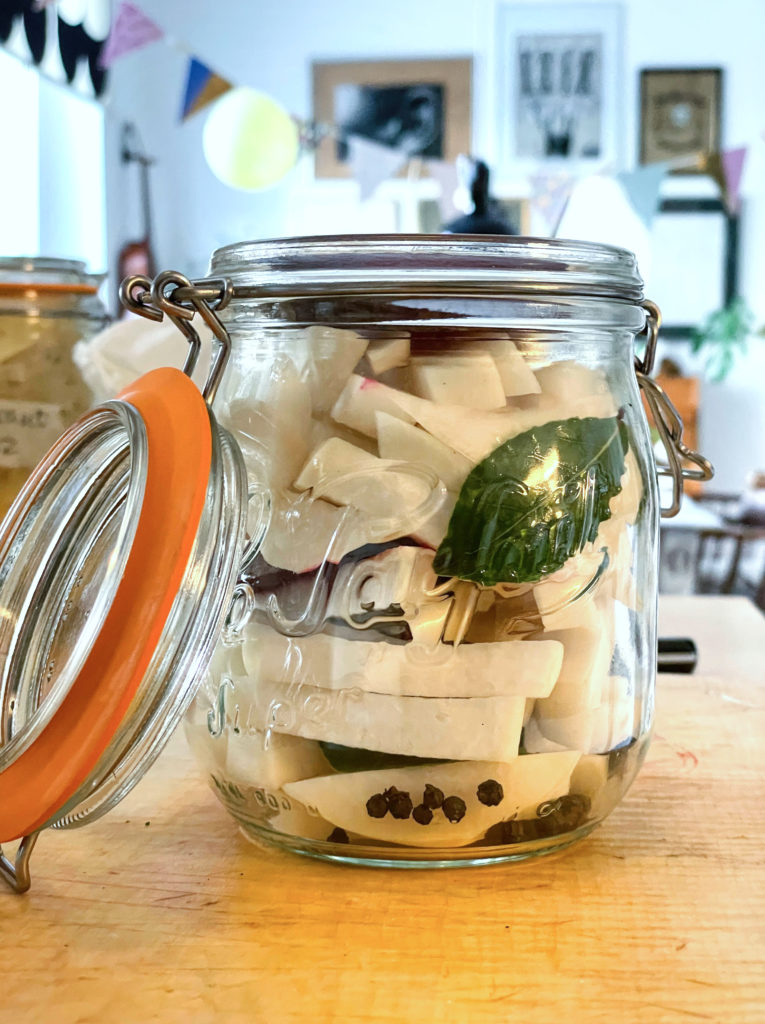
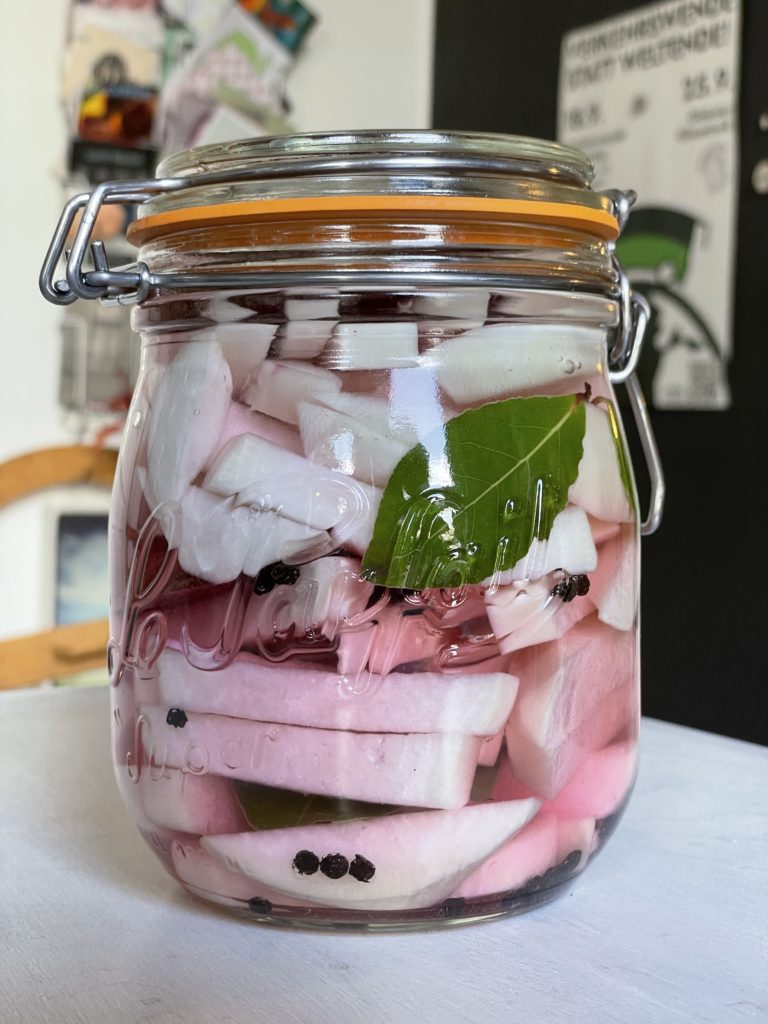
For me, fermenting is the preservation (and enhancement) of seasonal, regional products. That's why I prefer to ferment pink turnips in May and June.
I like to ferment this one as well, as is popular in Europe, by lactic fermentation with salt, not with vinegar. The traditional method for Torshi Left, as the pink turnips are called in Persian, requires the addition of vinegar. In the Middle East and Eastern Mediterranean, the regions of origin of this side dish, vinegar is added because of the high temperatures, as this slows fermentation. Indeed, lactofermentation exclusively with salt only gives good results when fermented in a slightly cooler environment.
Lactofermentation and vinegar? Is that even possible?
Lactic acid fermentation takes place, even if a little additional acidity is added at the beginning. For some ferments, the addition of acid changes the flavor profile in the most delicious way, so I wouldn't go without it. Vietnamese-style fermented cauliflower from Hang Quin's recipe, for example, tastes best when you add lemon juice or rice vinegar to the fermentation.
If you are interested in the scientific background: Acetic acid bacteria and lactic acid bacteria grow at a pH of about 3-4. If you don't get below that by acidifying, lactofermentation takes place.
The pickled pink turnips go great with falafel in pita bread, are a balancing side dish with meat, and really good as a mezze with hummus! What a great thing that from the kitchens of the Balkans and the Middle East, they have made their way around the world and are enjoyed everywhere.
Who's to thank for pink fermented turnips?
Torshi, ترشی, or tursu are just three names for the pickled vegetables of many Middle Eastern, Iranian, and Balkan cuisines. The dominant sour taste of classic torshi is due to vinegar or lacto-fermentation - as the name torsh, meaning sour, suggests.
Torshi is widely used in Arabic, Turkish, Kurdish, Afghan, Balkan, Armenian and Iranian cuisines. In Iran, there are hundreds of types of torshi, depending on regional customs and different occasions. In some families, no meal is complete without a bowl of torshi on the table. It is a traditional appetizer that is often served with popular anise-flavored liquors. In some regions, especially in Turkey, the brine of the ferment, torshi water, is a popular drink.
Sources
- Spektrum der Wissenschaft, https://www.spektrum.de/lexikon/biologie/acidophile-mikroorganismen
